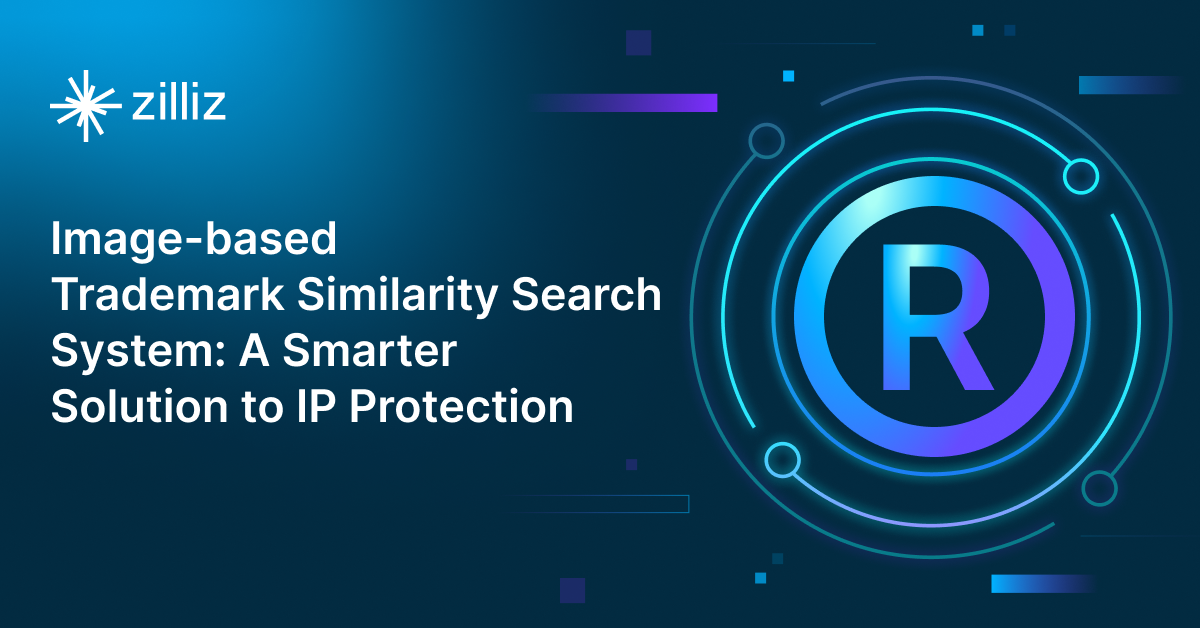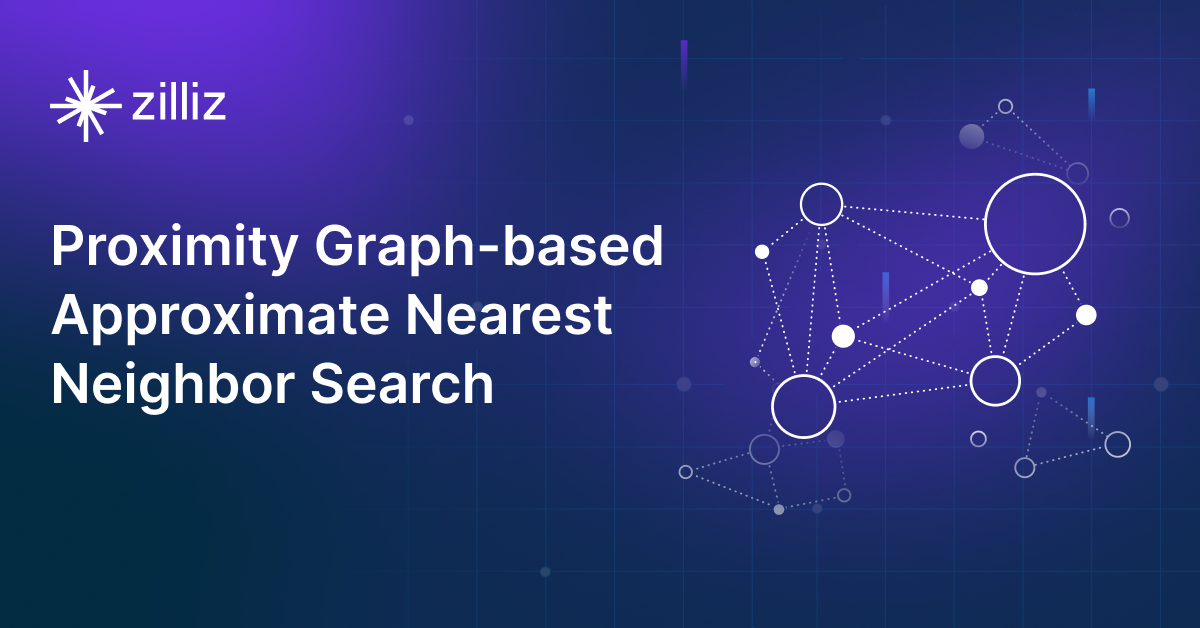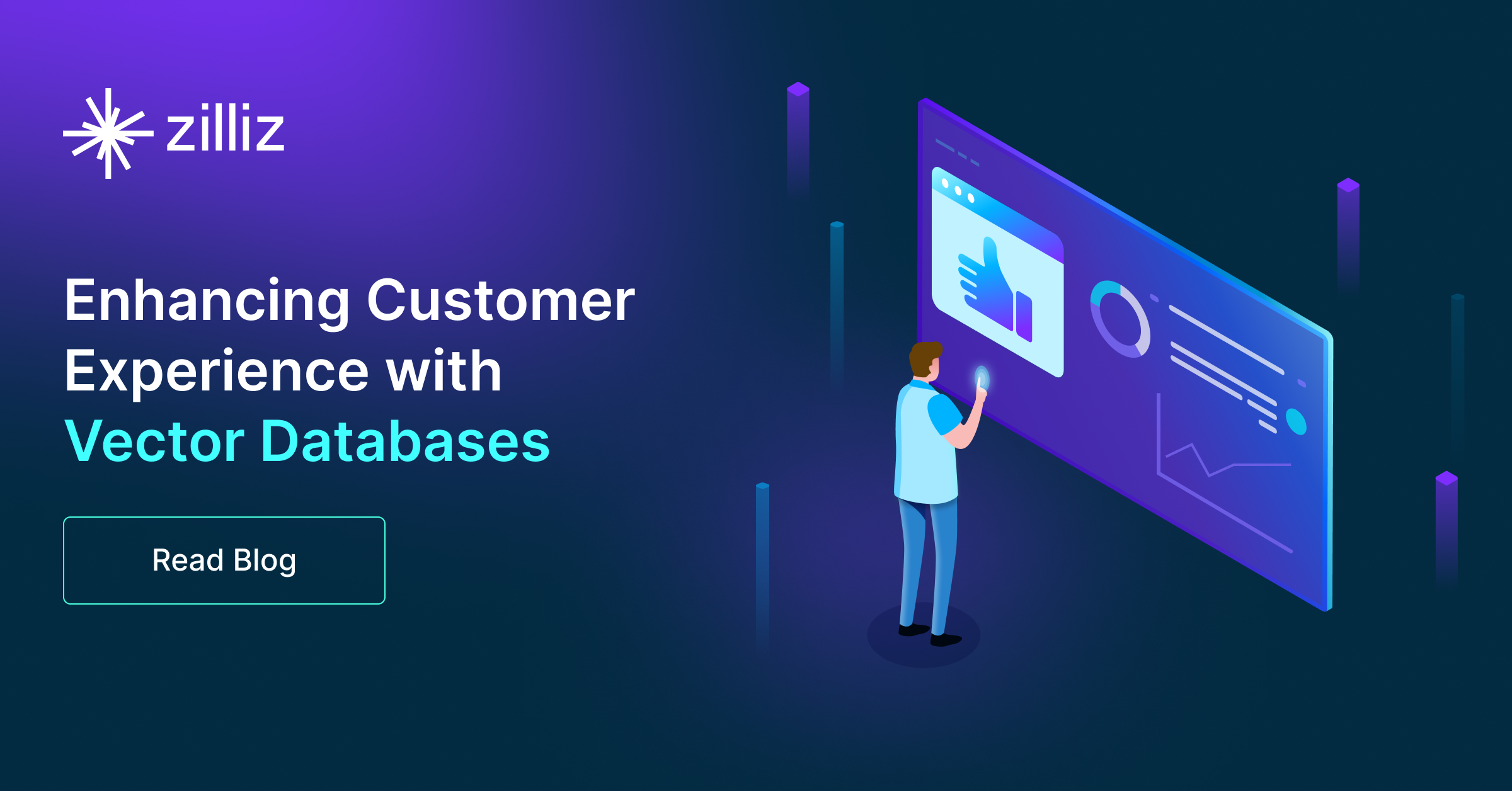Revolutionizing IoT Analytics and Device Data with Vector Databases
Vector databases, tailored to manage the high-dimensional data characteristic of IoT devices, stand at the forefront of addressing the inherent challenges of Volume, Velocity, Variety, and Veracity that frustrate traditional data management systems. This specialized data handling is a technical improvement and a paradigm shift, ushering in a new age of IoT data utilization marked by efficiency, accuracy, and scalability.
Read the entire series
- Image-based Trademark Similarity Search System: A Smarter Solution to IP Protection
- HM-ANN Efficient Billion-Point Nearest Neighbor Search on Heterogeneous Memory
- How to Make Your Wardrobe Sustainable with Vector Similarity Search
- Proximity Graph-based Approximate Nearest Neighbor Search
- How to Make Online Shopping More Intelligent with Image Similarity Search?
- An Intelligent Similarity Search System for Graphical Designers
- How to Best Fit Filtering into Vector Similarity Search?
- Building an Intelligent Video Deduplication System Powered by Vector Similarity Search
- Powering Semantic Similarity Search in Computer Vision with State of the Art Embeddings
- Supercharged Semantic Similarity Search in Production
- Accelerating Similarity Search on Really Big Data with Vector Indexing (Part II)
- Understanding Neural Network Embeddings
- Making Machine Learning More Accessible for Application Developers
- Building Interactive AI Chatbots with Vector Databases
- The 2024 Playbook: Top Use Cases for Vector Search
- Leveraging Vector Databases for Enhanced Competitive Intelligence
- Revolutionizing IoT Analytics and Device Data with Vector Databases
- Everything You Need to Know About Recommendation Systems and Using Them with Vector Database Technology
- Building Scalable AI with Vector Databases: A 2024 Strategy
- Enhancing App Functionality: Optimizing Search with Vector Databases
- Applying Vector Databases in Finance for Risk and Fraud Analysis
- Enhancing Customer Experience with Vector Databases: A Strategic Approach
- Transforming PDFs into Insights: Vectorizing and Ingesting with Zilliz Cloud Pipelines
- Safeguarding Data: Security and Privacy in Vector Database Systems
- Integrating Vector Databases with Existing IT Infrastructure
- Transforming Healthcare: The Role of Vector Databases in Patient Care
- Creating Personalized User Experiences through Vector Databases
- The Role of Vector Databases in Predictive Analytics
- Unlocking Content Discovery Potential with Vector Databases
- Leveraging Vector Databases for Next-Level E-Commerce Personalization
- Mastering Text Similarity Search with Vectors in Zilliz Cloud
- Enhancing Customer Experience with Vector Databases: A Strategic Approach
Imagine starting your day not by manually making coffee but with an automated coffee machine that perfectly times your first brew when you wake up. Commuting to work no longer feels like a roll of the dice with traffic; your smart, connected vehicle dynamically adjusts its path to bypass congestion. Back at home, you're welcomed by surroundings adjusted for ultimate comfort, with the temperature set exactly right, all without lifting a finger. This narrative isn't a futuristic fantasy. It's the actual development within the Internet of Things (IoT), a paradigm that extends the foundational concept of the Internet—the interconnectedness of computer networks globally— to include a vast array of physical objects and environments where everyday objects become participants in a digital symphony, orchestrating an enhanced human experience.
Informally, if the Internet connects computers, the IoT connects ordinary objects. These objects, equipped with sensors, actuators, and networking technology, can collect, send, and receive data without requiring human-to-human or human-to-computer interaction. The IoT landscape is a playground of infinite possibilities. However, the true magic of IoT resides in the substantial data output they generate.
Data: The Quintessence of IoT
Each IoT device is a storyteller, illustrating its experiences and perceptions through data. When this data is intelligently utilized, it can instantly improve our daily living and operational efficiencies, predict future needs, and identify previously hidden inefficiencies.
Picture this: data from various IoT devices pouring in—a mix of temperatures, timestamps, geographical locations, and much more. The first step is collecting and integrating this diverse mix into a harmonious dataset. The difficulty lies in gathering the data and ensuring it communicates in a uniform language, requiring advanced integration platforms. Storage then becomes our next frontier. As data volumes explode, the need for scalable and secure storage solutions is indisputable. Cloud technologies and sophisticated database solutions come into play here, providing a critical foundation for our IoT applications. But what good is data if it's not understood? Here's where data analytics, powered by machine learning and AI, turns data into gold. We can uncover patterns, predict trends, and even automate decision-making processes by analyzing this data.
Managing and analyzing IoT data presents unique challenges, often encapsulated by the four Vs. Imagine a library filled beyond capacity, with books still pouring in. This full library is the first V challenge in IoT, the Volume. Billions of devices generate so much data that traditional databases—like a small library trying to hold the world's books—struggle to keep up, leading to slowdowns and increased costs. Now, think of the books in our metaphorical library flying off the shelves and being replaced at lightning speed. This is the second V challenge, the Velocity. IoT data streams are so fast that traditional databases, which are more accustomed to a leisurely pace, can't process them quickly enough, delaying important decisions. Now consider that our library, along with the books, also has videos, audio tapes, and more, all mixed; that is the third V challenge, the Variety. IoT devices send data in many forms, from numbers to videos. Much like a library organized only for books, traditional databases find it hard to manage this Variety efficiently without significant changes. Some books in our library could be misprinted or in languages we can't understand. The fourth V challenge, Veracity, concerns data quality and accuracy. Like a librarian without the tools to check every book, traditional databases struggle to ensure the data they store and analyze is reliable.
Like upgrading from a small, local library to a vast digital library that's organized, quick to search, and capable of verifying the accuracy of its contents, managing IoT data requires new approaches. Emerging technologies like vector and time-series databases are beginning to address these challenges, offering hope for a more efficient and effective way to harness the power of IoT data.
Vector Databases: A Solution for IoT
IoT devices, from the sensors on factory floors to your smartwatch, capture an ever-widening spectrum of data. This isn't just your average spreadsheet data; it's rich, multidimensional information, capturing everything from the temperature over time to the spatial movements of a device. Each piece of data could represent hundreds or thousands of dimensions, each dimension a different attribute or feature. Enter the era of vector databases, explicitly crafted to embrace and make sense of high-dimensional—meaning data with lots of features—vector data.
A vector is an array of numbers, and in the context of data science, this list of numbers is often referred to as Vector Embeddings—numerical representations of data objects—describing certain features of an image or piece of data. Vector databases are good at quickly searching through vast amounts of vectors to find the ones most similar to the vector you're interested in. For instance, imagine you have an extensive collection of photos and want to see all the pictures similar to a particular sunset photo. In the case of your sunset photo, the vector might include numbers that represent its colors, the presence of water, the silhouette of trees, and so on. Undertaking this task with a conventional photo album would require a laborious, one-by-one comparison. On the other hand, Vector databases are explicitly built to handle this kind of high-dimensional data.
The Competitive Advantages of Vector Databases
● Similarity Searches: At the heart of Vector Databases' operations is the ability to identify data points that most closely align with a specified query. This process involves comparing vectors, each representing distinct data points, against the vector denoting the query. The crux of this operation hinges on mathematical measures of distance, such as the Euclidean distance or cosine similarity.
● Enhanced Data Indexing: Indexing is the backbone of effective data retrieval. The core of vector database functionality relies on indexing strategies that facilitate rapid similarity searches and the retrieval of nearest neighbors. The cornerstone of efficient data retrieval in vector databases lies in implementing Approximate Nearest Neighbor (ANN) search algorithms. Through an informed choice of similarity measures, these algorithms identify data points that, while not exactly matching the query vector, share semantic proximity. Flat Indexing maintains vectors in their untouched form for accuracy but sacrifices speed, which is suitable for small datasets; Locality Sensitive Hashing optimizes for speed by clustering similar vectors, thus reducing search space.
● Faster Query Responses: In IoT contexts, where real-time data processing and decision-making can be critical—for instance, within emergency response frameworks, urban smart technologies, and continuous industrial monitoring— the ability to quickly retrieve relevant data from vast datasets is invaluable. Vector databases optimize query performance through techniques like Product Quantization (PQ), which compresses data to speed up similarity searches without substantial loss of information.
● Improved Accuracy in Data Analytics: Contrary to traditional data handling paradigms, which may necessitate the simplification or reduction of data—thereby incurring potential information loss and diminished analytical Veracity—vector databases maintain data in its inherently high-dimensional state. Vector databases are designed to handle one specific type of data: vector embeddings. This preservation is instrumental in facilitating the deployment of sophisticated machine-learning algorithms capable of discerning intricate patterns and insights with heightened granularity.
Applications in IoT Analytics
Vector databases play a transformative role in IoT analytics by enabling efficient management, search, and processing of complex, unstructured data through advanced indexing and similarity search mechanisms.
- Vector databases support real-time monitoring by allowing IoT devices to efficiently index and search through vast amounts of data, ensuring timely responses to environmental changes or system anomalies. For instance, these databases employ AI-generated embeddings to analyze unstructured data semantically, improving query responses and enhancing systems such as recommendation engines through fast, similarity-based searches.
- Vector databases underpin predictive maintenance within IoT by utilizing a blend of analytics types—from descriptive to prescriptive. This integration facilitates the monitoring of device performance, identification of potential issues, and formulation of preemptive actions, consequently reducing downtime and operational costs while elevating customer satisfaction. For instance, sensors embedded in infrastructure can relay data in real time, allowing maintenance teams to address vulnerabilities before they escalate into failures.
- By analyzing data from IoT devices, companies can forecast customer needs, deliver new services, and adopt flexible pricing models. For healthcare applications, this means developing patient-centered analytics that automatically alerts healthcare professionals to potential health issues detected by connected medical devices, leading to proactive patient care. Hence, personalized IoT services benefit from the detailed insights vector databases provide.
Integrating vector databases with IoT, especially AI, machine learning, and edge computing advancements, is steering toward creating more intelligent and interactive IoT devices. The fusion of technologies like ChatGPT with IoT platforms exemplifies the potential for this integration to revolutionize how we interact with IoT systems. By leveraging LLM's advanced natural language processing capabilities with Arduino Cloud's IoT development and management platform, developers can forge intelligent devices capable of understanding and responding to natural language queries. These technologies are poised to enhance IoT data analytics by improving the efficiency and context-awareness of applications. This means we can expect more sophisticated AI applications, from sentiment analysis and chatbots to smart cities and personalized user experiences, all powered by the deep learning capabilities of vector databases. The future of vector databases includes:
Advanced vectorization techniques.
Hybrid databases for more versatile data handling.
Optimized hardware to support the growing demands of AI and IoT applications.
Summary and Conclusion
Vector databases, tailored to manage the high-dimensional data characteristic of IoT devices, stand at the forefront of addressing the inherent challenges of Volume, Velocity, Variety, and Veracity that frustrate traditional data management systems. This specialized data handling is a technical improvement and a paradigm shift, ushering in a new age of IoT data utilization marked by efficiency, accuracy, and scalability.
Key to the operation of vector databases is their adeptness at conducting similarity searches, foundational for real-time monitoring, predictive maintenance, and personalized services within IoT frameworks. Advanced indexing strategies that utilize mathematical constructs like Euclidean distance and cosine similarity facilitate unprecedented efficiency in querying data. This capability transforms IoT data into actionable insights, enhancing operational efficiencies and outcomes across many IoT applications. Therefore, it becomes imperative for entities embarking on IoT ventures to consider the adoption of vector database technologies. This strategic decision is poised to unlock the full potential of IoT data, yielding actionable insights that propel operational efficiencies and drive enhanced outcomes. Embracing these technologies marks a step into a future where IoT solutions become more efficient, accurate, and scalable, heralding a new era of innovation and value creation within the IoT ecosystem.
- Data: The Quintessence of IoT
- The Competitive Advantages of Vector Databases
- Applications in IoT Analytics
- Summary and Conclusion
Content
Start Free, Scale Easily
Try the fully-managed vector database built for your GenAI applications.
Try Zilliz Cloud for FreeKeep Reading

Image-based Trademark Similarity Search System: A Smarter Solution to IP Protection
Learn how to use a vector database to build your own trademark image similarity search system that could save you from intellectual property lawsuits.

Proximity Graph-based Approximate Nearest Neighbor Search
Learn what PG-based ANNS is and how to optimize the algorithm to achieve a trade-off between search accuracy and efficiency.

Enhancing Customer Experience with Vector Databases: A Strategic Approach
Understand how vector databases process data to enhance customer experience and drive business growth.
